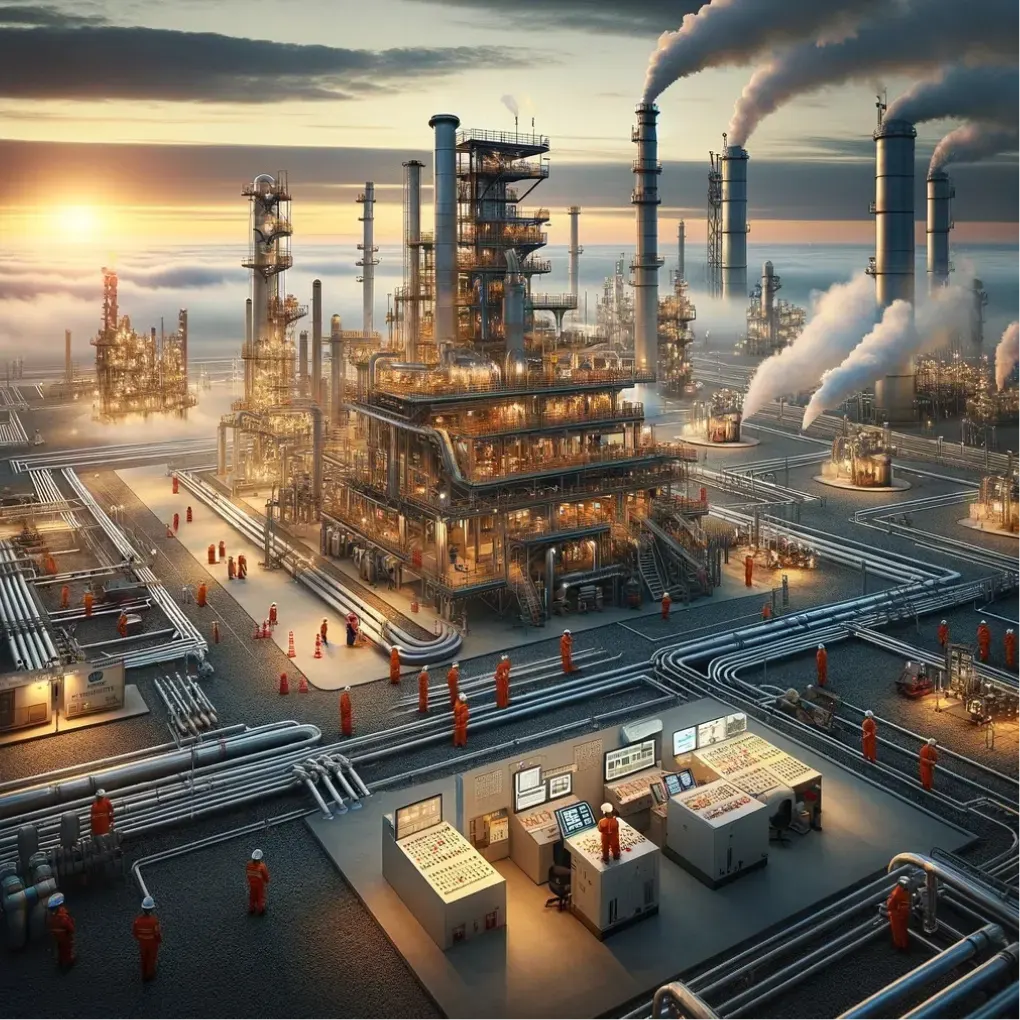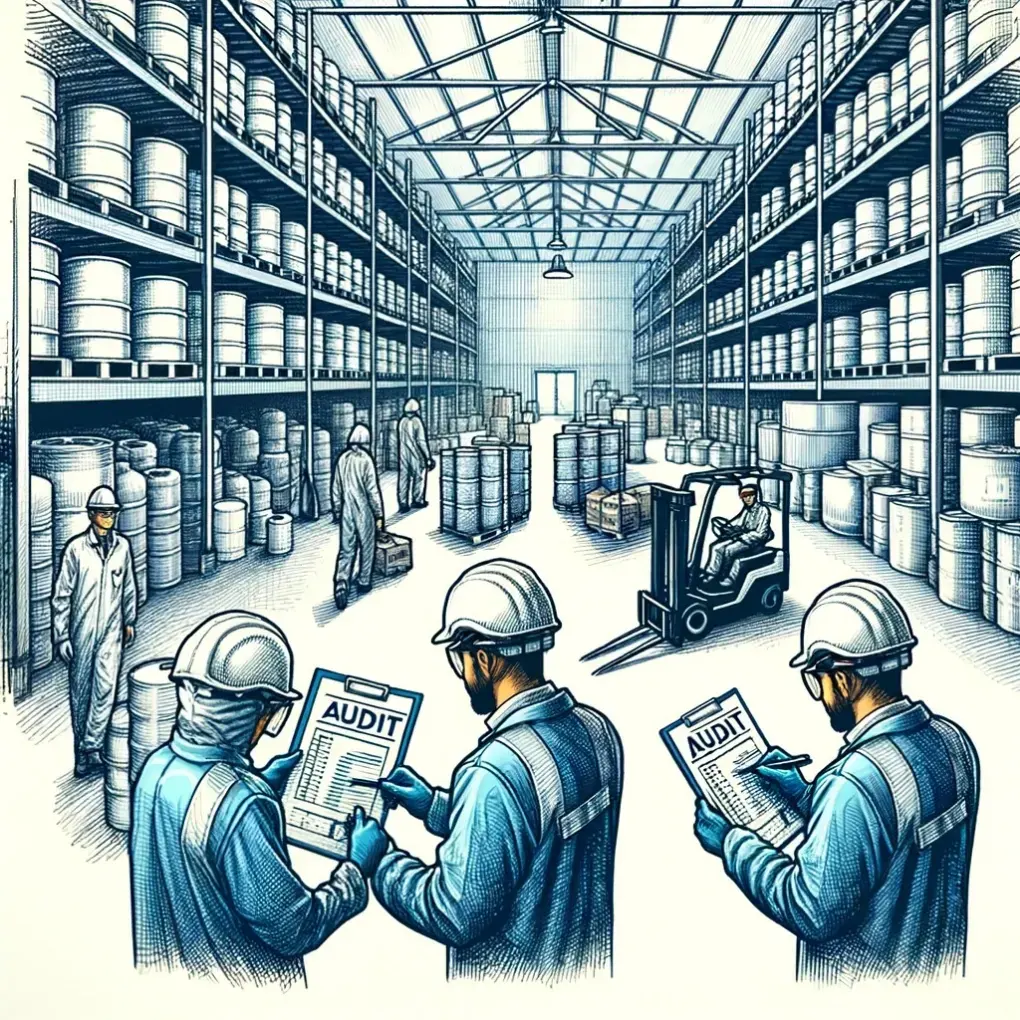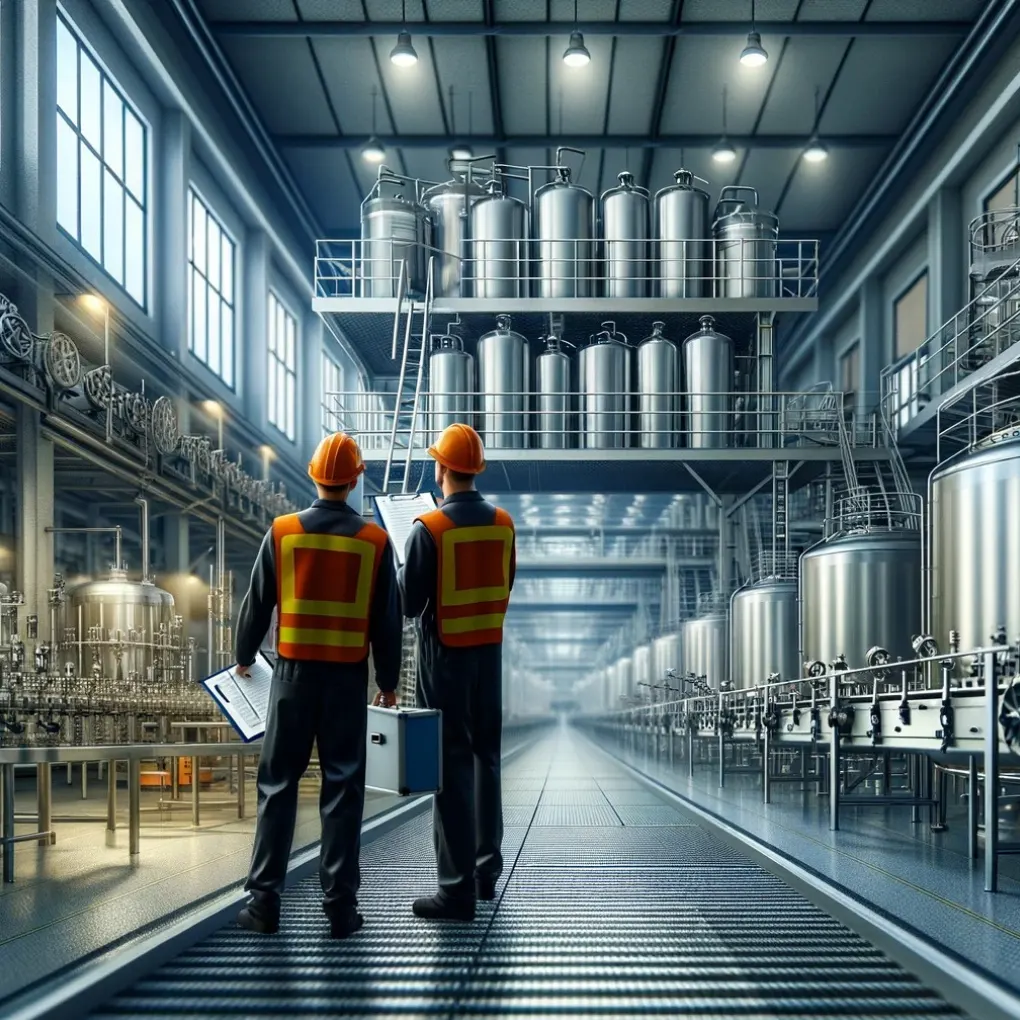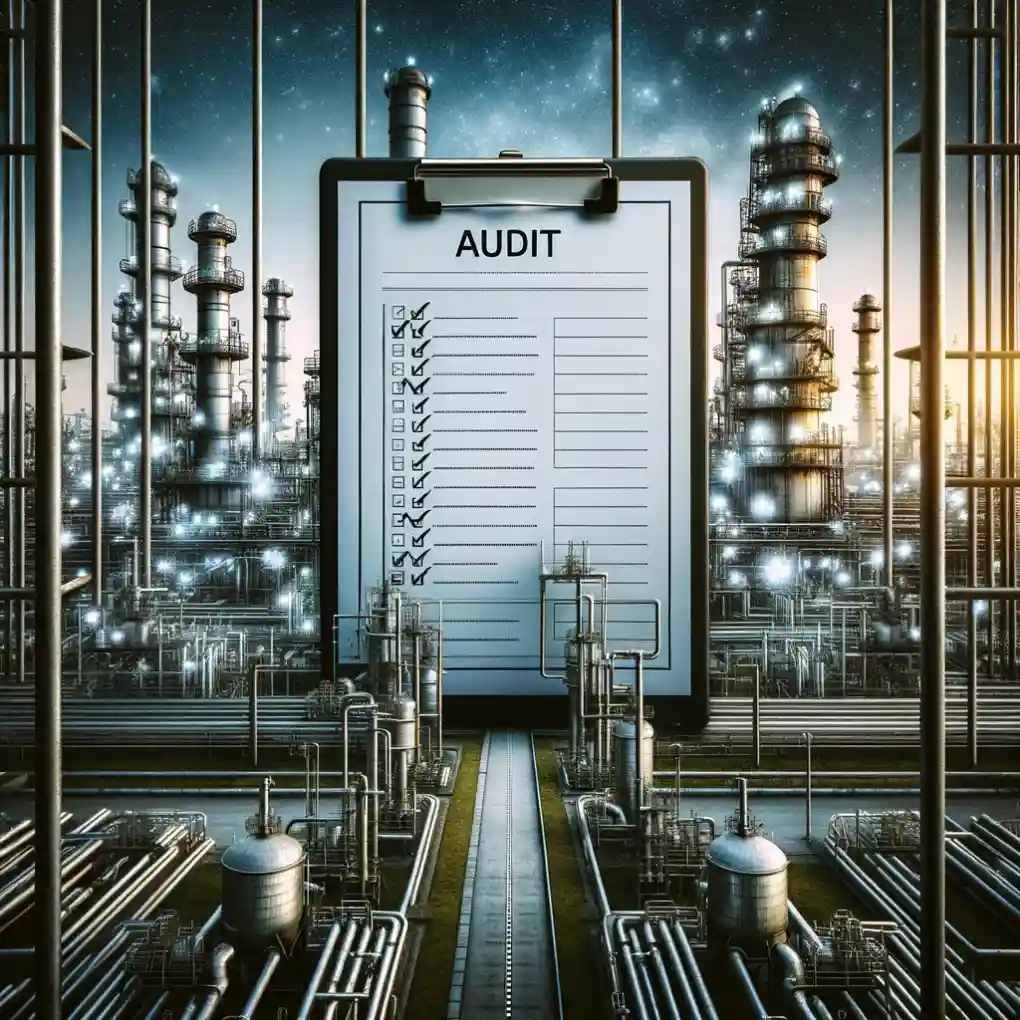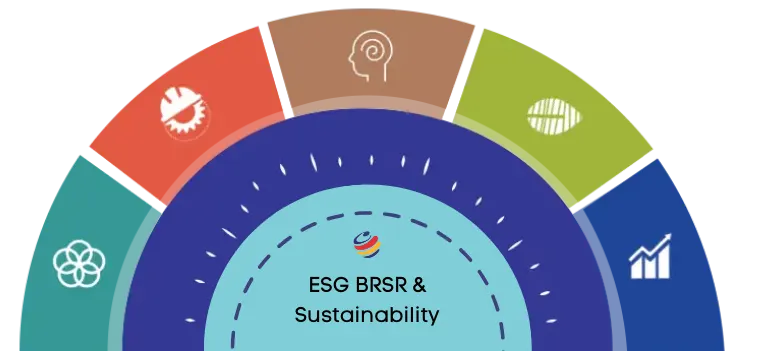Fire Safety Rules and Regulations play a significant role in fire risk management. Worldwide, fire is recognised as a significant risk across diverse industry sectors.
Almost every day some fires are reported by the media across the country. Such fires not only claim numerous lives and cause injuries but also lead to substantial property damage.
During the last two decades, there has been vibrant growth in construction activities across India, especially in the domain of high-rise buildings.
Because of its specific nature, fires in residential buildings, in particular, high-rise building fires, are more complex to handle, and effect rescues from. The salvage operations become more difficult and sometimes even result in deaths and huge property losses.
The rapid modernisation of Indian Industry has also made the scenario more complex. Awareness towards fire safety has not been quite forthcoming.
This article will focus on the overall scenario of the existing fire safety regulations in India and the effectiveness of these regulations in combating potential fire hazards.
What you will find here
Importance of Fire Safety Rules, Regulations and Legal Requirements
The importance of fire safety rules and regulations in a vastly populated country like India is paramount. There are many rules and regulations, codes and standards related to fire safety across different industry sectors.
Legal requirements ensure that fundamental fire and life safety measures are in place to manage the potential risks associated with fire incidents.
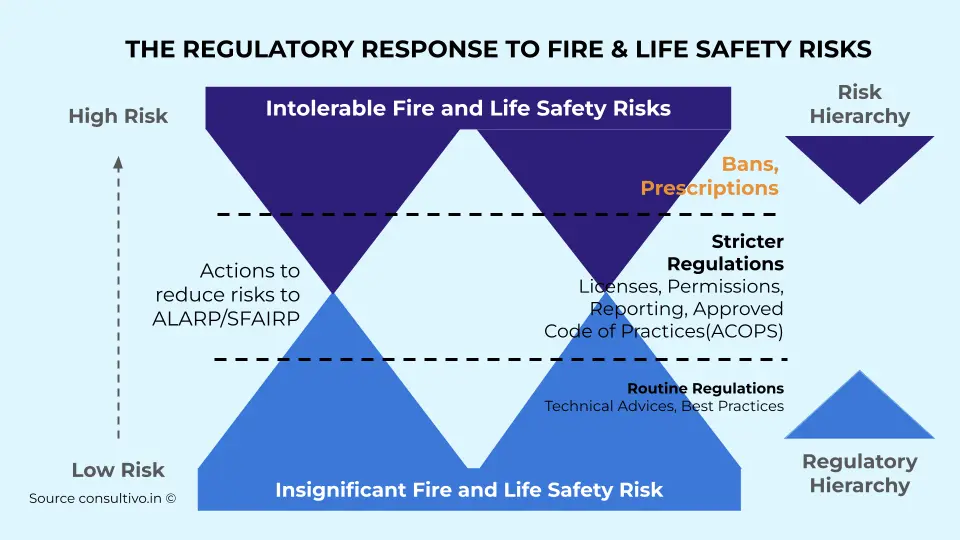
The Fire and Life Safety legal framework in India
The primary framework for fire safety regulations in India is the National Building Code of India (NBC), published by the Bureau of Indian Standards (BIS). The first edition of the NBC was published in 1970.
The third edition of the NBC was published in 2016 (the latest at the time of writing this article), incorporating the most contemporary developments in the construction activities in the country.
- Inclusion of a complete philosophy and direction for successfully accomplishing the building projects through an Integrated Multidisciplinary Approach, right through the conceptual stage to the planning, designing, construction, operation and maintenance stages.
- A series of reforms in the building permit process
- Provisions to ensure and certify the safety of buildings against natural disasters by the engineer and structural engineer
- Provision for two-stage permits for high-rises and special buildings
- Provision for a periodic renewal certificate of occupied buildings from a structural, fire and electrical safety point of view.
- Provision for empowering engineers and architects for sanctioning plans of residential buildings of up to 500 m2.
- Inclusion of detailed town planning norms for various amenities such as educational facilities, medical facilities, distribution services, police, civil defence and home guards and fire services
- Revision of parking requirements for metro and megacities
- Revision of the provisions for buildings and facilities for the physically challenged
- Fire safety norms were completely revamped through detailed provisions on Fire Prevention, Life Safety and Fire Protection.
- Inclusion of new categories of starred hotels, heritage structures and archaeological monuments for fire safety provisions
- Substitution of halon-based fire extinguishers/fire fighting systems
- Promotion to new/innovative building materials/technologies
- Demarcation of the fire zone
- Restriction on the construction of buildings in each fire zone
- Other restrictions and requirements necessary to minimise danger to life from fire, smoke, fumes or panic
- Classification of buildings: Based on occupancy type, height, and floor area.
- Fire resistance requirements: For structural and non-structural components.
- Means of escape: Stairwells, fire escapes, and emergency exits.
- Fire detection and alarm systems: Types, installation, and maintenance.
- Firefighting equipment: Extinguishers, sprinklers, and hydrants.
- Storage and handling of hazardous materials: Regulations for specific materials.
- Emergency preparedness and evacuation plans: Drills, training, and signage.
The NBC 2016 recognises that the safety of life is more than a matter of means of egress and accordingly deals with various matters that are considered essential to the safety of life.
The Code therefore covers provisions relating to means of egress covering various components thereof, namely exit access, exit and exit discharge.
This plan takes into account the relative and ultimate safety considerations for both horizontal and vertical exits, along with a dedicated provision for a Fire Tower. It also covers provisions relating to fire protection of various occupancies through portable and fixed fire fighting installations, as outlined in Table 7 of NBC 2016.
The Fire Prevention and Fire Safety Act, 2005
Various state-specific fire safety rules and acts derive their foundation from the NBC, emphasising the importance of compliance at both national and regional levels. By and large, the State Fire Prevention and Fire Safety Act and Rules complement the National Building Code.
The State Fire Services Act is for the fire safety of the buildings. This law is a state legislature that needs to be maintained by all the states. It is an act to consolidate and amend the law relating to fire prevention and fire safety.
Some local-state laws are also applicable like the Maharashtra Fire Prevention and Life Safety Measures Rules, 2009, framed under the Maharashtra Fire Prevention and Life Safety Measures Act, 2006.
Related Statutes
Apart from the specific State Acts and Rules stated above, a number of legislations are available on matters relating to fire prevention, and fire protection.
Factories Act and Rules (State-specific)
Amongst these, the Factories Act and State Factories Rules are important ones. Section 38 of the Factories Act, 1948, emphasises the obligations of the occupier, which include
(i) to adopt all practicable measures to prevent the outbreak and spread of fire,
(ii) to provide a safe means of escape,
(iii) to maintain the firefighting equipment properly and
(iv) to familiarise all the workers with the means of escape during the fire and train them in steps to be taken in a fire accident.
Section 37 of the Factories Act, 1948, also prescribes detailed measures to prevent explosion hazards.
The State Factories Rules, framed under the Factories Act, have prescribed in detail, all the steps to be taken to prevent fire hazards.
PESO
PESO stands for the Petroleum and Explosives Safety Organization, and its main role is to oversee the safe handling, storage, and transportation of materials that can catch fire or explode. This regulates fire safety in industries where there is the use of hazardous substances.
Electrical rules
Electrical rules also contain fire and safety requrements in order to prevent electrical fire-related accidents.
Environment Protection Act of 1986
Environment Protection Act of 1986, which talks about environmental safety, also gives guidance regarding fire safety because, indirectly or directly, fire accidents harm or pollute the environment as well.
Chemical Accidents Rules, 1996
Chemical Accidents Rules, 1996 are there for the industries that are related to any type of chemicals. They give ideas regarding emergency planning, preparedness, and response in case of an accident, including fire accidents, as well.
Explosives Act and Rules
The Explosives Act and Rules are the legal regulations that control how explosives and similar materials are handled, stored, and transported.
Static and Mobile Pressure Vessel Rule 2016
Gas Cylinders Rules, 2016
Indian Boiler Regulations 1950
The Indian Boiler Regulations are like the rulebook for how boilers are used in India. They’re in place to ensure that boilers are used safely and to prevent any risk of fires or explosions.
Disaster Management Act mandates fire safety measures in public buildings.
Model Building Bye-Laws 2016
Provides guidelines for construction projects.
Specific industry regulations: E.g., Petroleum Rules 2002 and Petroleum (Amendment) Rules, 2021 for refineries.
The Ministry of Housing and Urban Affairs has issued fire protection and fire safety requirements for multistoried buildings and buildings that are 15 metres and above in height
IS (BIS) Codes
BIS has formulated more than 150 standards on fire safety in buildings and firefighting equipment & systems.
The important ones are:
- Code of practice for fire safety of building (IS 1641 to IS 1646)
- IS:4878-1986 Reaffirmed 2005 Indian Standard Bye-Laws for Construction of Cinema Buildings
- Electrical generating and distributing stations (IS 3034)
- Cotton textile mills (IS 3079)
- Rubber and plastic (IS 11457 Part 1)
- Libraries and archives (IS 11460)
- Iron and steel industries (IS 13694)
- Hotels (IS 13716)
- Educational institutions (IS 14435)
- Fire detection and alarm systems (IS 2189)
- First aid fire extinguishers (IS 2190)
- Internal hydrants and hose reels (IS 3844)
- Temporary structures and pandals (IS 8758)
- Fire protection-safety signs (IS 12349)
- External hydrant systems (IS 13039 )
- Fixed automatic sprinkler fire extinguishing systems (IS 15105)
- Gaseous fire extinguishing systems (IS 15493)
- Water mist system (IS 15519)
- Portable fire extinguishers (IS 15683)
- Long-range foam monitors (IS 15811) etc.
Industry-specific standards
OISD Standards
Oil Industry Safety Directorate (OISD) is a technical directorate under the Ministry of Petroleum and Natural Gas of the Government of India, which formulates and coordinates the implementation of a series of self-regulatory measures aimed at enhancing the safety in the oil & gas industry in India.
OISD had issued a number of standards and the important ones are:
- OISD STD 105 (permit to work system)
- OISD STD 114 (Safe handling of hazardous chemicals)
- OISD STD 116 (Fire Protection Facilities for Petroleum Refineries and Oil/Gas Processing Plants)
- OISD STD 117 (Fire Protection Facilities for Petroleum Depots, Terminals, Pipeline installations & Lube oil installations)
- OISD STD 118 (Layout for oil and Gas Installation)
- OISD STD 144 (Liquified petroleum gas installation)
In addition to these, there are other relevant statutory rules and regulations that prescribe fire safety measures.
The continuous process of updation
As the legal landscape continues to evolve, staying abreast of these requirements is imperative for businesses and organisations.
It is essential to regularly review and update fire safety measures to align with the latest revisions in the statutory requirements.
The National Building Code, regularly updated to align with evolving safety standards, sets forth stringent requirements for fire prevention, protection, and mitigation systems. Businesses and building owners must adhere to these guidelines to ensure the safety of occupants and compliance with the law.
Failure to meet these legal requirements not only jeopardises the well-being of individuals but also exposes violators to legal consequences and potential actions taken by regulatory authorities.
This proactive approach not only safeguards against legal repercussions but, more importantly, contributes to creating a secure environment that prioritises the well-being of occupants and the protection of property.
Importance of Fire Safety Audit in meeting legal compliance
In this context, fire safety audits emerge as a crucial component in meeting legal obligations. These audits, conducted systematically, help assess and enhance fire safety standards in buildings and workplaces.
They play a vital role in identifying potential fire hazards, ensuring compliance with different requirements like the National Building Code, and validating adherence to state-specific fire and safety rules.
Though a Fire Safety Audit is found to be an effective tool for assessing the fire safety standards of an organisation or occupancy, there are no clear-cut provisions in any of the fire safety legislations in India, regarding the scope, objectives, methodology and periodicity of a fire safety audit.
Internal Audit/inspection: The NBC 2016, recommends periodical fire safety inspection by the key personnel among the occupants of a building to ensure fire safety standards.
Who bears the responsibility for implementing the necessary fire protection and prevention systems within a building or occupancy?
Often, a question has been raised by many about who will be responsible for providing the required fire protection and prevention system in a building or occupancy.
The onus of maintaining the fire safety installations in a building or in an occupancy lies with the owner or occupier.
You may consider how the acts and rules enacted by the State of Maharashtra have been well defined on these points.
According to Section 3 of the Maharashtra Fire Prevention and Life Safety Measures Act, 2006, the developer, owner, occupier or whatever name they are called by shall comply with all the fire and safety measures, adhering to the National Building Code of India, as amended from time to time, failing which it shall be treated as a violation of the Act.
Conclusion
There are multiple fire safety rules and regulations in India. For example, there are separate rules and regulations with respect to factories, industries, environment, schools, hospitals, etc.
However, the objective of all these rules and regulations regarding fire safety is to prevent fire accidents. Well-established law helps individuals and organisations to comply with them so that fire accidents can be prevented.
Remember: Always check with your local authorities for the exact regulations applicable to your specific case.

Let's discuss
Share this post
Category: Blog
Tags: Audit, Safety, Fire Safety, OHS Legal Compliance, National Building Code NBC 2016
About Consultivo
Consultivo is a management advisory and consulting firm helping global businesses in the areas of Sustainability, Business Excellence & Risk Management – both in the strategic and operational levels.
The Consultivo research and analytics wing works on industry, society and community-oriented research programs on ESG, Sustainability and business risk in both qualitative and quantitative fields.
Consultivo is a leading Fire and Life Safety Audit, Consulting and Advisory firm and provides the following solutions:
- Fire and Life Safety Consulting Solutions
- Fire and Life Safety Audits
- Fire Safety Audit for Manufacturing Units – Factories, Process Plants, Hazardous Plants
- Fire Safety Audit for High Rise Commercial Buildings – Offices, Hypermarkets, Hospitals, Hotels, Malls, Housing Societies
- Fire Safety Audits for Industrial Buildings like Warehouses, Depots, Retail Outlets, Sales & Service Centres etc
- Fire Risk Assessment and Fire Load Calculation
- Fire Pre-Plan
- Fire Installation Review Programme (FIRM) and Fire and Life Safety (FLS) Technical Due Diligence (TDD)
- Fire Safety Training Programs
Empowering Safety, Ensuring Resilience: Consultivo’s Fire and Life Safety Consulting Solutions
Related insights
Impact Stories
Impact Stories
Impact Stories
Impact Stories
Impact Stories
Impact Stories
View more in Impact Stories | Blogs | Knowledge Bank | News and Events



